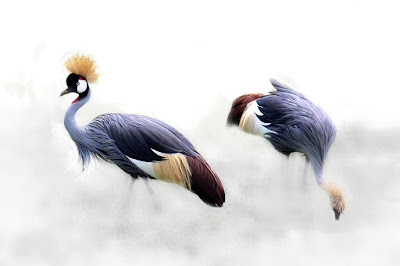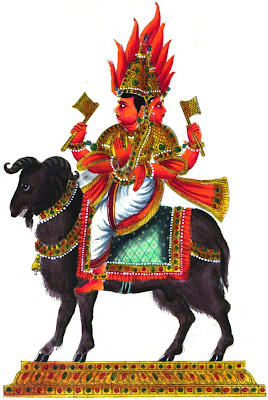Reading Notes: Mahabharata Part B
A yajna where ghee can be offered to the fire.
Image by: Srkris at English Wikipedia via Wikimedia Commons
The festivities are interrupted by a brahmin that looked as if he had been traveling for a long time as his clothes were ripped up and he had the traditional dreadlocks of the holy hermits. The brahmin claimed to be Agni, the fire god, and asked Krishna and Arjuna to burn the forest of Khandava for him to consume. Agni had become weakened by his twelve years of fasting, so each time he had tried to consume the forest in flames, he was not able to stop Indra, its protecting deity, from putting out the fire with a giant rain storm. Krishna and Arjuna agreed to set the forest on fire and prevent Indra from putting it out as long as Agni procured them some celestial weapons. Once Agni provided the weapons they proceed to successfully burn the entire forest down and Agni is restored.
During his fasting Agni consumed only ghee, a form of clarified butter that is sacred in Hinduism. For Hindu rituals ghee is made with butter from cow's milk as cows are a sacred animal in the religion. Ghee is made by simmering butter until the milk solids separate from the fat and become golden brown. Then the liquid fat which is the ghee is poured off and the left over milk solids discarded.
In the Hindu fire sacrifices called yajña and homa ghee is offered to various gods through Agni by pouring it into the sacred fire.
Bibliography. "The Burning of the Forest" from The Mahabharata, A Summary by John Mandeville Macfie. Source.




Comments
Post a Comment